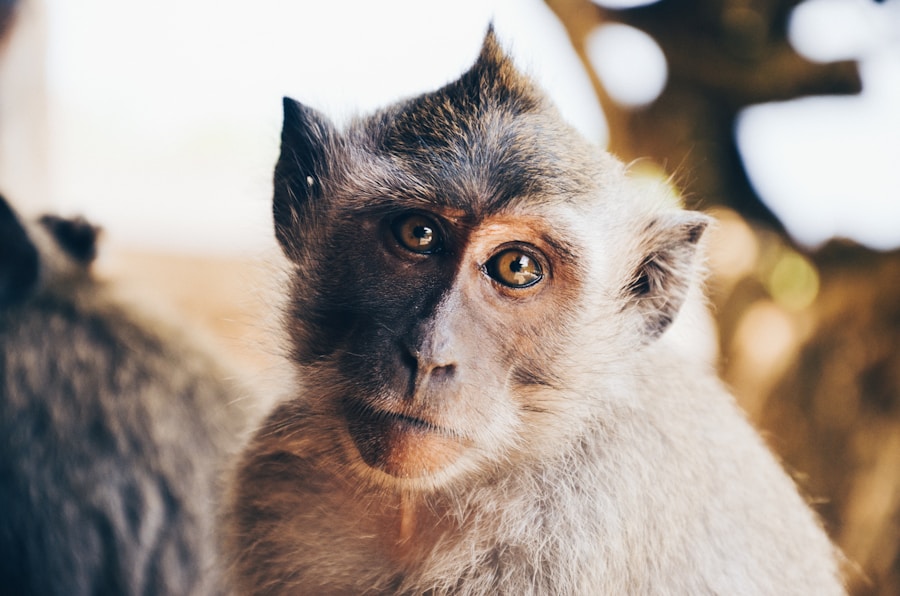ESCAPING THE NARCISSIST
Are you trapped in a toxic relationship? It's time to reclaim your life and find healing. ESCAPING THE NARCISSIST: HOW TO HEAL AND RECOVER FROM NARCISSISTIC ABUSE IN RELATIONSHIPS is your guide to breaking free and starting your journey towards recovery.
Don't let the pain control you any longer. Take the first step today and discover the strategies to overcome emotional abuse and rebuild your life. You deserve happiness and peace.
Start Your Healing Journey TodayFlying Monkey Signs refer to the nonverbal and covert behaviors that individuals engage in to support and enable a manipulative person, often referred to as the “Narcissist.” These signs can be subtle and difficult to detect, but they play a crucial role in perpetuating the toxic dynamics of a narcissistic relationship. Understanding Flying Monkey behavior is essential for anyone who wants to protect themselves from manipulation and maintain healthy boundaries.
The Psychology Behind Flying Monkey Behavior
The term “Flying Monkey” originates from the classic movie “The Wizard of Oz,” where the Wicked Witch of the West sends her flying monkeys to do her bidding. In the context of narcissistic relationships, Flying Monkeys are individuals who willingly or unknowingly become enablers for the narcissist. They may engage in this behavior due to various reasons, such as fear of the narcissist’s wrath, a desire for validation or approval, or a belief that they are genuinely helping the narcissist.
Group dynamics also play a significant role in Flying Monkey behavior. In many cases, the narcissist creates a toxic environment where they manipulate and control those around them. This environment fosters a sense of loyalty and dependence among the Flying Monkeys, making it difficult for them to break free from the narcissist’s influence. Additionally, groupthink and social pressure can further reinforce their role as enablers.
Understanding the Different Types of Flying Monkey Signs
Flying Monkey Signs can be categorized into three main types: verbal, nonverbal, and covert signs.
Verbal Flying Monkey Signs include statements or comments made by individuals that support or defend the narcissist’s actions. These can range from outright lies to subtle manipulations designed to discredit or invalidate the victim’s experiences.
Nonverbal Flying Monkey Signs refer to body language cues that indicate support for the narcissist. These can include nodding in agreement, maintaining eye contact with the narcissist, or displaying open and welcoming body language.
Covert Flying Monkey Signs are more subtle and often go unnoticed by the victim. These signs can include spreading rumors or gossip about the victim, sabotaging their relationships or opportunities, or engaging in passive-aggressive behavior.
Deciphering the Body Language of Flying Monkeys
Body language plays a crucial role in communication, and Flying Monkeys often use it to convey their support for the narcissist. Common body language cues of Flying Monkeys include mirroring the narcissist’s gestures or posture, leaning towards the narcissist, and avoiding eye contact with the victim. It is essential to interpret body language in context, as some cues may have different meanings depending on the situation.
The Importance of Eye Contact in Flying Monkey Communication
Eye contact is a powerful form of nonverbal communication that can convey a range of messages. Flying Monkeys often use eye contact to signal their loyalty and support for the narcissist. They may maintain prolonged eye contact with the narcissist while ignoring or avoiding eye contact with the victim. Understanding how to respond to Flying Monkey eye contact is crucial for protecting oneself from manipulation.
The Meaning Behind Different Facial Expressions of Flying Monkeys
Facial expressions can provide valuable insights into an individual’s emotions and intentions. Common facial expressions of Flying Monkeys include smirking, raised eyebrows, or a condescending smile when the victim expresses their concerns or challenges the narcissist’s behavior. Interpreting facial expressions in context is essential, as some expressions may have different meanings depending on the situation.
The Role of Vocalizations in Flying Monkey Communication
Vocalizations, such as tone of voice and specific words used, can also convey important messages in Flying Monkey communication. They may use a sympathetic tone when discussing the narcissist’s actions or dismissive language when referring to the victim’s experiences. Understanding how to interpret vocalizations in context can help identify Flying Monkey behavior and protect oneself from manipulation.
How Flying Monkeys Use Gestures to Convey Messages
Gestures, such as pointing or nodding, can be used by Flying Monkeys to signal their support for the narcissist. They may point towards the narcissist when discussing a particular topic or nod in agreement with the narcissist’s statements. Interpreting gestures in context is crucial for understanding the underlying messages being conveyed.
The Significance of Posture and Movement in Flying Monkey Language
Posture and movement can provide valuable insights into an individual’s intentions and emotions. Common postures and movements of Flying Monkeys include standing close to the narcissist, mirroring their movements, or displaying open and welcoming body language towards the narcissist. Interpreting posture and movement in context is essential for understanding the dynamics of a narcissistic relationship.
The Impact of Context on Flying Monkey Signs
Context plays a significant role in Flying Monkey behavior and the interpretation of their signs. The same behavior or sign may have different meanings depending on the situation. For example, a Flying Monkey may engage in supportive behavior towards the narcissist in public but express doubts or concerns in private. Understanding how context affects Flying Monkey behavior is crucial for accurately identifying their signs and responding appropriately.
Practical Tips for Dealing with Flying Monkey Behavior
Identifying Flying Monkey behavior can be challenging, but there are practical tips that can help protect oneself from manipulation. These include:
1. Educate yourself about narcissistic behavior and manipulation tactics.
2. Trust your instincts and pay attention to your feelings when interacting with individuals who may be Flying Monkeys.
3. Set clear boundaries and communicate them assertively.
4. Surround yourself with a supportive network of individuals who respect your boundaries.
5. Seek professional help if needed, such as therapy or counseling.
Conclusion:
Understanding Flying Monkey behavior is crucial for protecting oneself from manipulation and maintaining healthy boundaries. By recognizing the different types of Flying Monkey signs, deciphering body language, understanding the role of eye contact, facial expressions, vocalizations, gestures, posture, and movement, and considering the impact of context, individuals can navigate narcissistic relationships more effectively. Applying practical tips for dealing with Flying Monkey behavior can help individuals protect themselves and maintain their emotional well-being.


